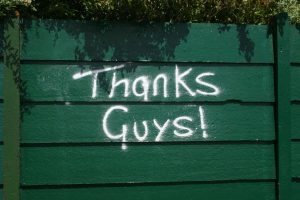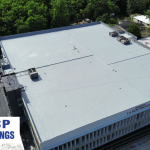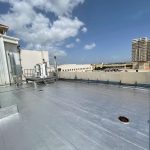Distinguishing harmful graffiti from street art is a subjective business – its “in the eye of the beholder.” While one young man’s spray-painted reference to the never-ending bitter rivalries among Hip-Hop and Rapper stars may raise a smile or a laugh from those who get the joke, the less relaxed among us might find the choice of Kendrick Lamar’s “Not Like Us” lyrics to make this point rather alarming. Or worse.
The hidden effects of graffiti are largely unquantifiable, but it is generally acknowledged that certain types of graffiti can leave a very negative impression of the buildings or areas where graffiti is prevalent: individual businesses or entire streets can be perceived by the public as being less “worthy” than those that are not similarly “blighted”.
In surveys, some members of the public have reported feeling “frightened” or even “threatened” by particular forms of the phenomenon. Whole town and city streets will become “No Go Areas” for sections of the community.
One of the effects of graffiti that is well known, however, is graffiti attracts more graffiti. A wall that is already defaced is seen by other practitioners as a welcoming landscape for their artistic efforts. Aithníonn ciaróg ciaróg eile, as the old Irish saying goes, and one spray-painted wall encourages another spray-painter.
Footfall can mysteriously diminish in a street or neighbourhood, and residents or business owners scratch their heads, wondering “Why?”, even though the answer is, literally, before their very eyes. In business terms it can lead to falling sales and revenues; in residential areas, an ensuing rise in vandalism is not uncommon. In security and insurance circles this is known as “the broken window syndrome.”
Graffiti can be a major headache for businesses as expensive sales campaigns fail to deliver – the only results being higher costs and lower revenues. Communities experience greater levels of vandalism and unsocial behaviour because their neighbourhood is seen to be attractive to an unwelcome element, leaving residents feeling frightened and insecure.
Graffiti prevention is a straightforward and inexpensive process. All manner of surfaces can be protected by GraffStop, providing an invisible barrier which prevents the paint or marker ink adhering properly, and allows it to be simply washed away with a cloth and warm water. Persistent graffiti artists don’t like the idea of their work being washed down the drain and so will seek out other locations.
Spraycan artists quickly realise that on a surface protected by GraffStop their paint “bubbles” and does not catch (See the “Thanks Guys!” picture): an aerosol can of paint is not cheap – the artist will smartly move on.

GraffStop goes on working for years – when you wipe away the graffiti, the GraffStop barrier is unharmed and intact to repel the next attack, and the one after that, again and again. One simple treatment of GraffStop will provide years of protection and peace of mind.



